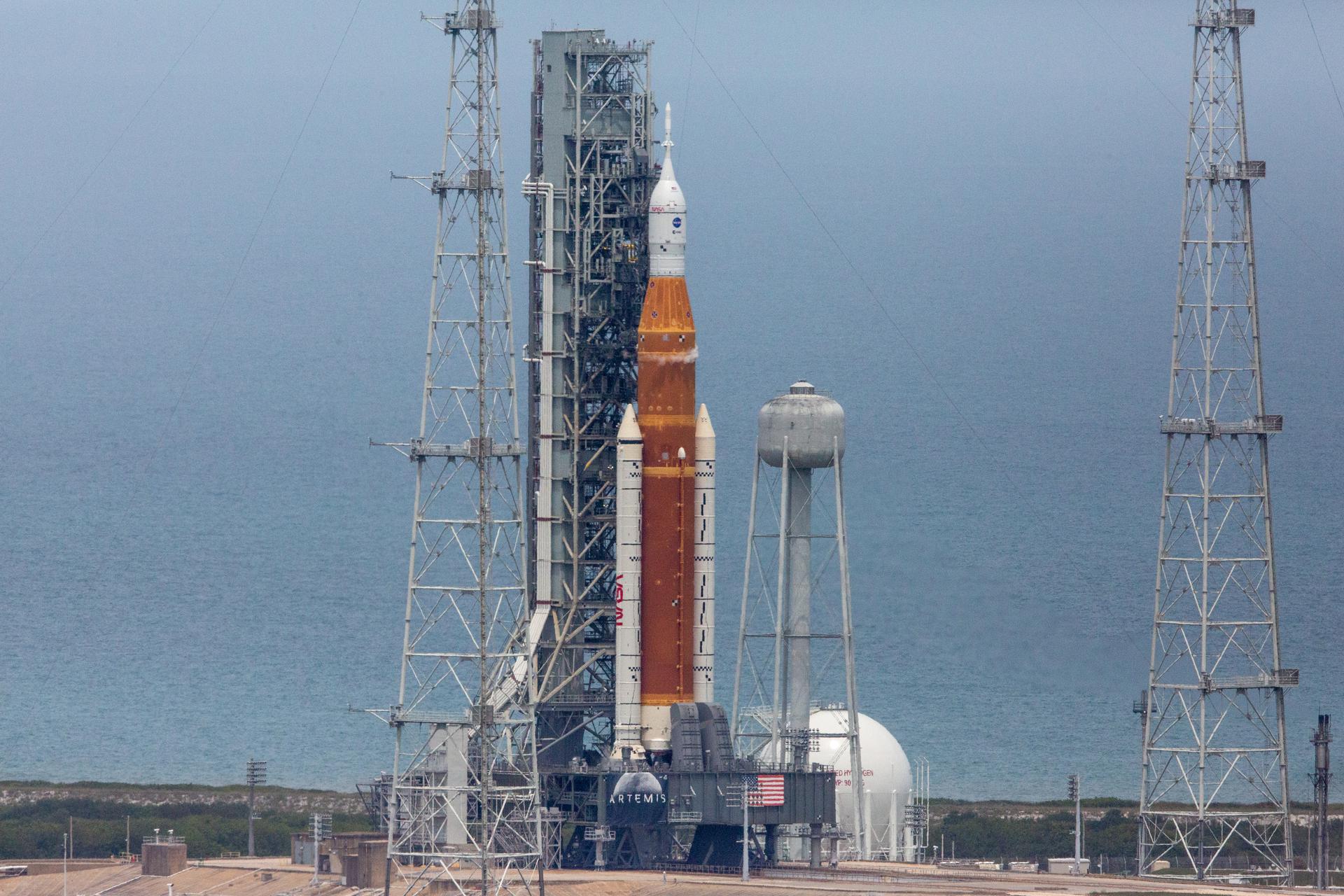Nasa could return to Moon in just more than a month, agency says
Nasa’s first test flight of its giant Moon rocket could come before the end of August

Nasa’s mega Moonrocket could launch the Orion spacecraft on a test flight around the Moon as early as 29 August, with the space agency targeting 2 and 5 September as back up dates, according to Jim Free, associate administrator of Nasa’s Exploration Systems Development Mission Directorate.
“These are [the dates] we are looking to today based on how the work has gone,” Mr Free said during a Wednesday press conference about the impending launch. The dates could change based on weather and other factors he said, but “we’re going to work hard to meet the attempts on those dates.”
Nasa’s Space Launch System (SLS) rocket and Orion spacecraft are the cornerstones of the space agency’s Artemis Moon program, which aims to return humans to the lunar surface in 2025 with the Artemis III mission. The coming uncrewed test flight, which would see Orion fly around and beyond the Moon and then return to Earth, is Artemis I.
Originally intended to launch in 2017, the Artemis I flight has seen multiple delays, most recently a series of failed “wet dress rehearsal” tests where Nasa attempted to load SLS with cryogenic propellant with the rocket on the launch pad at Kennedy Space Center in Florida. The space agency succeeded in its fourth attempted wet dress test on 22 June, but that test uncovered hydrogen leaks in the rocket that had to be repaired after the rocket rolled back inside the Vehicle Assembly Building on 2 July following the test.
“We are in the process of getting postured to do the testing to retest those seals, to make sure we don't have any leaks there,” said Cliff Lanham, Nasa’s senior vehicle operations manager.
Testing and preparation for the flight test will have to proceed at an aggressive pace in order to make the proposed launch attempt dates, Nasa Artemis mission manage Michael Sarafin acknowledged on Wednesday.
“The next several weeks will be a flurry of activity,” he said. “Launch day is going to be here before we know it.”
The exact timing length of the Artemis I mission will vary depending on the date it actually launches, according to Mr Sarafin.
On 29 August, a two hour launch window opens at 8.33am EDT, allowing for 42 day mission that will see the Orion spacecraft splash down on 10 October.
The two hour launch window for a 2 September launch opens at 12.48pm EDT, and the subsequent 39-day mission would splash down on 11 October.
A 1.5-hour 5 September launch window would open at 5.12pm EDT allowing for another 42-day mission returning to Earth on 17 October, according to Mr Sarafin.
Part of the launch scheduling is based on avoiding placing the solar-powered Orion in the Earth’s shadow during a lunar eclipse from 30 August to 1 September, he added.
All of the launch dates will depend on all favorable weather and all systems looking ready for launch.
“This is the first time that we're going to try and launch this vehicle,” Mr Free said, “we're going to be careful.”
Regardless of when Artemis I launches, the objectives for the test flight are the same, according to Mr Sarafin.
“Our first and our primary objective is to demonstrate Orion's heat shield under lunar reentry conditions,” he said. Orion will be hitting the Earth’s atmosphere at around 24,500 miles per hour, faster than low Earth orbit reentry for spacecraft coming home from the International Space station, and “no aerodynamic or aerothermal test facility can recreate the conditions that we will see when we return from lunar reentry and lunar return conditions.”
The second object is to ensure that all of Orion’s systems work as expected and give Nasa confidence the spacecraft will safely carry a human crew, beginning with the Artemis II lunar flyby scheduled for 2024.
“Orion itself will give us further confidence as a human rated spacecraft that it can tolerate the extreme thermal environment of deep space,” Mr Sarafin said. “That we can fly in the deep space environment including passing outbound and then returning through the Van Allen radiation belts.”
A third mission objective is the safe splashdown of the Orion spacecraft in the Pacific Ocean and recovery of its data and some components for reuse, Mr Sarafin said.
Lastly, Orion will deploy small satellites and take images during the mission to show the public what Nasa’s new generation of lunar exploration will look like. Wednesday press conference came on the 53rd anniversary of the Apollo 11 Moon Landing in 1969, an intentional scheduling choice meant to tie Nasa’s past to its future.
“today's anniversary is a good reminder of what a privilege it is to be a part of a mission like this,” Mr Sarafin said. “It's not just the Artemis one mission, but it's a bigger picture of returning to the moon and preparing to go to Mars.”
Join our commenting forum
Join thought-provoking conversations, follow other Independent readers and see their replies
Comments
Bookmark popover
Removed from bookmarks